Supporting Your Teen During School Breaks
As we are heading into our vacation, I am thinking about a student at Rock Point from many years ago who really struggled to get back into the school...
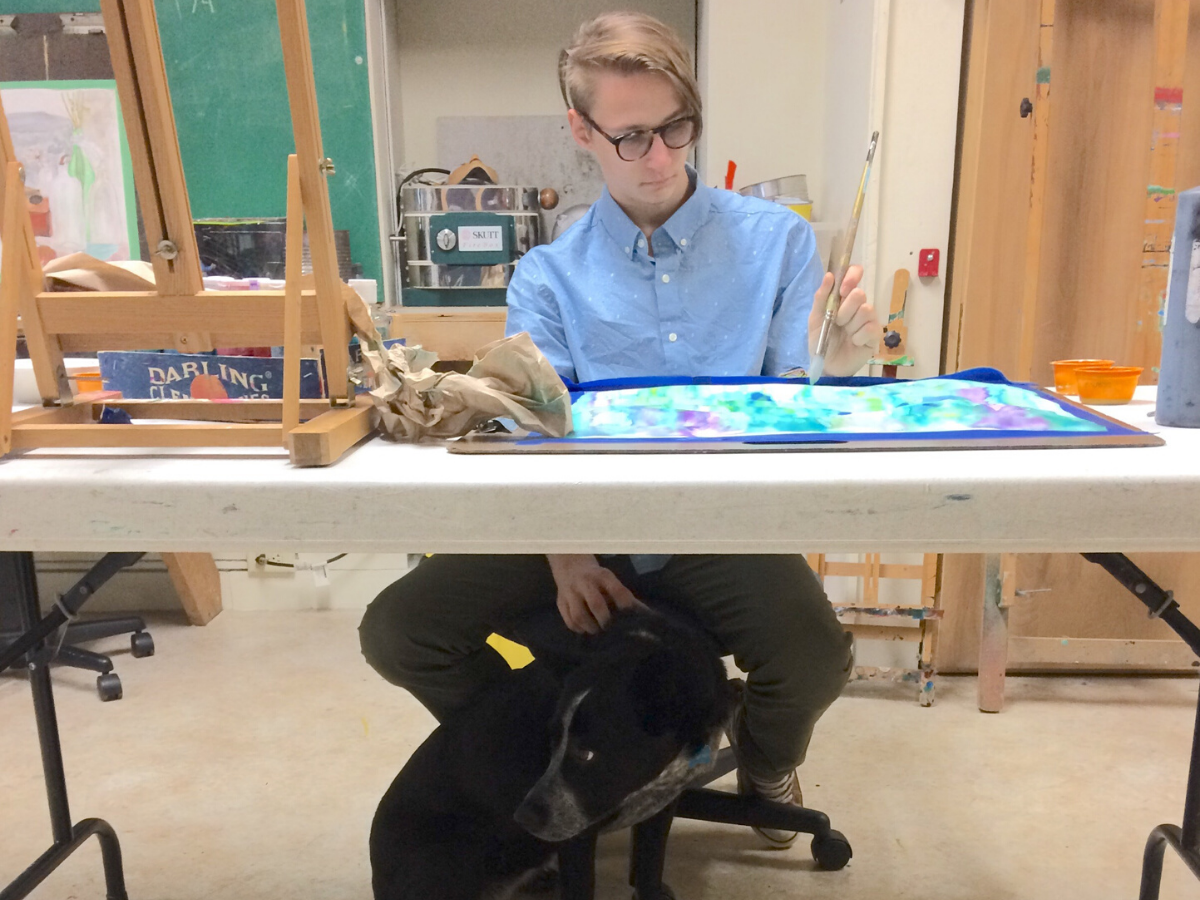
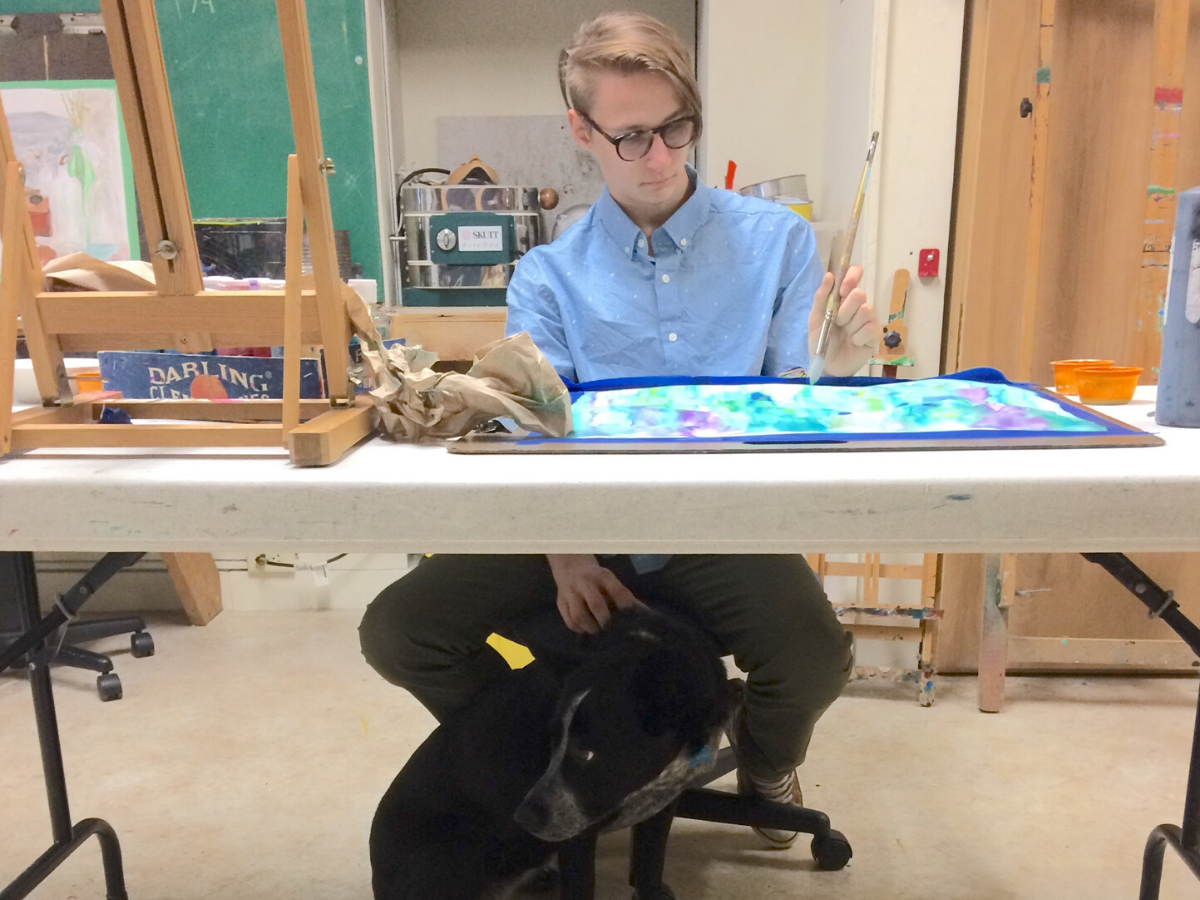
The art room has been known to be a place where students open up and want to talk. Maybe it’s because while working with their hands students’ thoughts go on autopilot and they seamlessly feel comfortable sharing. Maybe they feel empowered or, in the very least, reassured in hearing about artists who found success while questioning social norms. Maybe it’s because during the creative process we actually work closely. Maybe safely sharing “personal space” is a catalyst for why the art room has emerged as a place that’s “safe” in every sense of the word.
No exaggeration, at some point, during a class I will be less than six inches away from each and every one of my students. In the wake of COVID - 19, be it collaborating on a project, or demonstrating a technique, the term “working closely” has taken on a deeper meaning for me.
As we were getting ready to suspend on-campus activities my heart sank in so many ways. I sincerely grappled with how I could engage students in art instruction and lend support “remotely.” For reasons obvious, I wanted to find a way to keep the lines of communication open while providing a creative outlet.
In times of stress (yup, we can go with global pandemic as an example), it’s not just art teachers who want students to find a sense of solace in being creative. In fact, researchers have found that spending just 45 minutes a day working on a piece of art can reduce stress hormones.
In my eyes, I wanted to create an exercise that prioritized the well-being of my students and if the online art assignments eventually equated to credits on a transcript, it would be a “Bob Ross, ‘happy accident’”.
I knew whatever I decided had to be accessible in every way. Not everyone has a treasure trove of art supplies. For some, the time between knowing they were leaving campus and departing was very short. Understandably, many went home without their sketchbooks. Understandably, many went home feeling a sense of powerlessness. Feeling powerless is very real for all of us right now but combined with forgetting a sketchbook? I feared some students would look at it like the cement block that broke the camel's back.
Throughout this crisis, I’ve been asking myself what is within my power? More specifically, what am I good at that’s going to sustain me through this catastrophic event? I know I’m a good problem solver and that “Creative Thinking” is part of my work as an artist. That kind of creative thinking is necessary for everyone when dealing with “COVID curveballs” (my affectionate name for the unexpected challenges of this time). So as I started to think about this assignment, I decided sketchbook, shmecksbook (art supplies optional), the art assignment should focus on creative thinking.
As an art educator my life purpose was validated when creative thinking emerged as a valuable trait, but more so, as a cluster of skills that could be taught.
Though there are many resources that explain the nuances of creative thinking, in 2006 Sir Ken Robinson’s Ted Talk “Do Schools Kill Creativity” gave educators a lot to think about. Actually, it must have given everyone a lot to think about. It’s the most viewed of all Ted Talks.
Creative thinking is about problem solving and being resourceful in innovative ways and a thing Covid-19 is currently giving us a pop quiz on. I know I’m not alone in exercising some culinary creativity after resourcefully digging through the pantry. My Instagram is overflowing with the #covidcooking of dusted off canned goods and forgotten freezer finds. So many likes and, thus far, zero botulism!
Covid-19 is testing our resilience. It’s time to put on our creative thinking caps.
What I came up with was directly influenced by Inktober, the brainchild project of Jake Parker. In a nutshell, anyone who has access to the internet can find a list of daily prompts for every day of October and is encouraged to create a pen and ink drawing, depicting the prompt and hashtag it #inktober on social media. Although I have assigned pen and ink drawings to my students annually in the fall, they were the ones who introduced me to Jake Parker’s project!
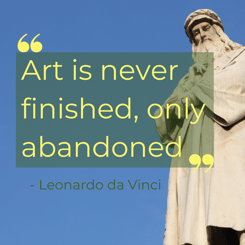 Before I introduced the logistics of the assignment I was clear with students, they were not expected to create a masterpiece. I wanted them to use their hands a little bit, most days...be playful, experiment with new and unusual materials, and not get hung up on a final product or question, if what they were doing, was “good.” Leonardo da Vinci famously said, “Art is never finished, only abandoned.” As most artists know, “The most important possible thing you can do, is do a lot of work.” (Ira Glass).
Before I introduced the logistics of the assignment I was clear with students, they were not expected to create a masterpiece. I wanted them to use their hands a little bit, most days...be playful, experiment with new and unusual materials, and not get hung up on a final product or question, if what they were doing, was “good.” Leonardo da Vinci famously said, “Art is never finished, only abandoned.” As most artists know, “The most important possible thing you can do, is do a lot of work.” (Ira Glass).
Four days a week, I share a word and the students are asked to spend at least 30 minutes creating a piece inspired by that word. I chose words that have double (or sometimes multiple) meanings to help inspire a wide array of responses. For example, an early word prompt was “Grounded,” which could mean a punishment, a “grounded” plane, how electricity doesn’t electrocute us, or being connected to the earth.
How they represent a meaning (the subject of the piece) could be literal, metaphorical or symbolic and further communicated through an artistic style be it representational, abstract or surreal. How they create or craft (make) the piece is where I sincerely hoped they’d “think outside of the box.” I encouraged students to get outside, use tactile things, get messy, dust off their legos, “branch out” while using sticks and take artistic risks.
Though many of my students are making amazing digital art, I suggested they limit digital work to one piece per week in an effort to get them away from a screen, especially now as we’re all staring at our screens a lot lately. Overall, I’m hoping they’ll survey their surroundings and see everyday items in a different way and problem-solve. Though an extreme strategy, one of my suggestions was to open any drawer in your home and only use what’s in it.
I specifically chose words that were open to interpretation and expressly unrelated to the Covid-19 pandemic, knowing researchers have found, making unrelated art is more effective in helping us process sadness and I didn’t want to waste an opportunity to “distract” my students in a possibly positive way.
Because of its file upload feature I chose to use Google forms as the way for students to send me their work. The form can accept a huge variety of files. Photo, video, audio, and digital—even large files! The form has a few questions about their process and one, asking if it’s okay for me to share their work. The work of those willing to share can be viewed in this album on our flickr page, which will be updated each week. (Like the toast smiley face above!)
We are now a few weeks into distance learning and I’ve been pleasantly surprised and delighted by the work students have created. Also surprising and a welcomed addition, staff members and their children feeling inspired to join in!
The usual hang-ups that happen in the art room are still happening in the digital world. Some students worry their work isn’t good enough to share (“It is!” I tell them—actually, I’ve begged a few to share) and some students are staying in the comfort zone of their sketchbooks (“That’s fine!” I say followed by, “Hope you’re well! Miss ya face!”). Many have reached out in some way for reassurance or encouragement. My “decorative” chalkboard in my kitchen now has a pragmatic place in my professional life as a way to respond to emails with photos of quick solutions or ideas for students.
More so, I’m reminding students, they and their art are good enough, and even though I’m home, I’m there for them...followed by a variation of heart emojis which thankfully seem to be endless❣️I have a new appreciation for the internet allowing me to stay connected to students. Every morsel that supports the continuity of knowing them doesn’t just feel like, but is, a precious opportunity right now. 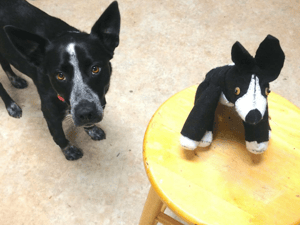
Yes, I miss “working closely” with my students. As in, I miss our conversations in the laundry room when they should be in study hall, or finding them behind my desk snuggling with Bebe, “the art dog” in the middle of class.
As I continue to teach from a distance, I’ll be seeking out more ways to engage students with the hope our lack of physical proximity and current calamity doesn’t derail the genuine relationships we’ve been cultivating. I’m certain Bebe feels the same and pretty sure one of her many forlorn looks asked “When do I get to see my students again?”
Art Making and Stress Reduction - Psychology Today
Do Schools Kill Creativity? - TED Talk by Sir Ken Robinson
The Gap by Ira Gloss - This American Life
7 science-backed reasons you should make art, even if you're bad at it - Business Insider

As we are heading into our vacation, I am thinking about a student at Rock Point from many years ago who really struggled to get back into the school...
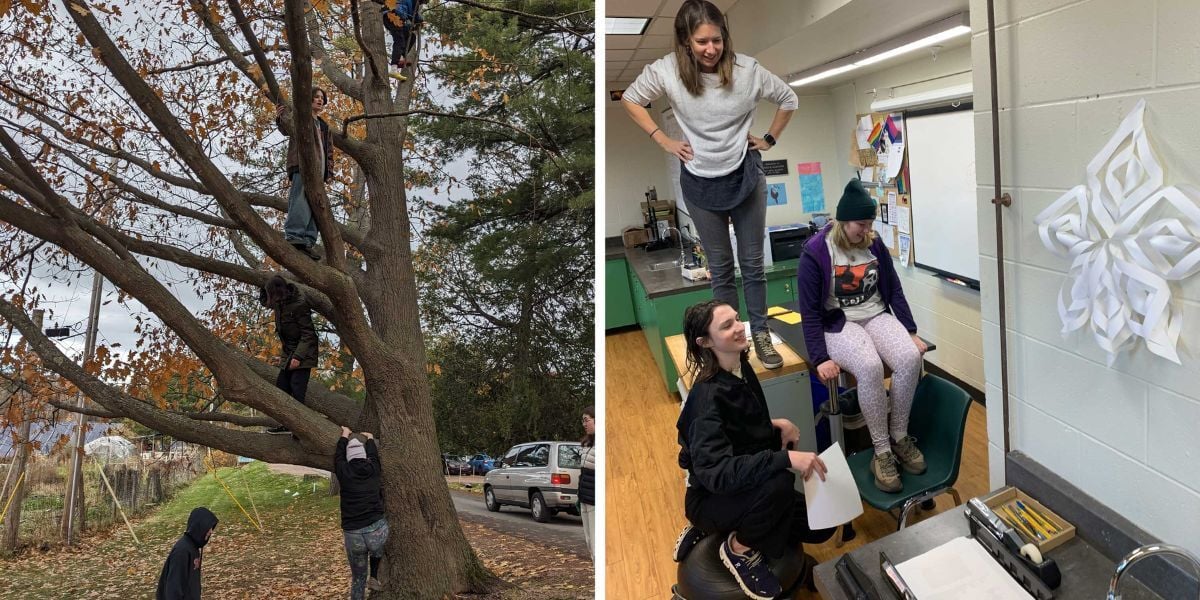
Every quarter, students choose from several electives, which meet three times a week to supplement the curriculum and provide a fun way to start...
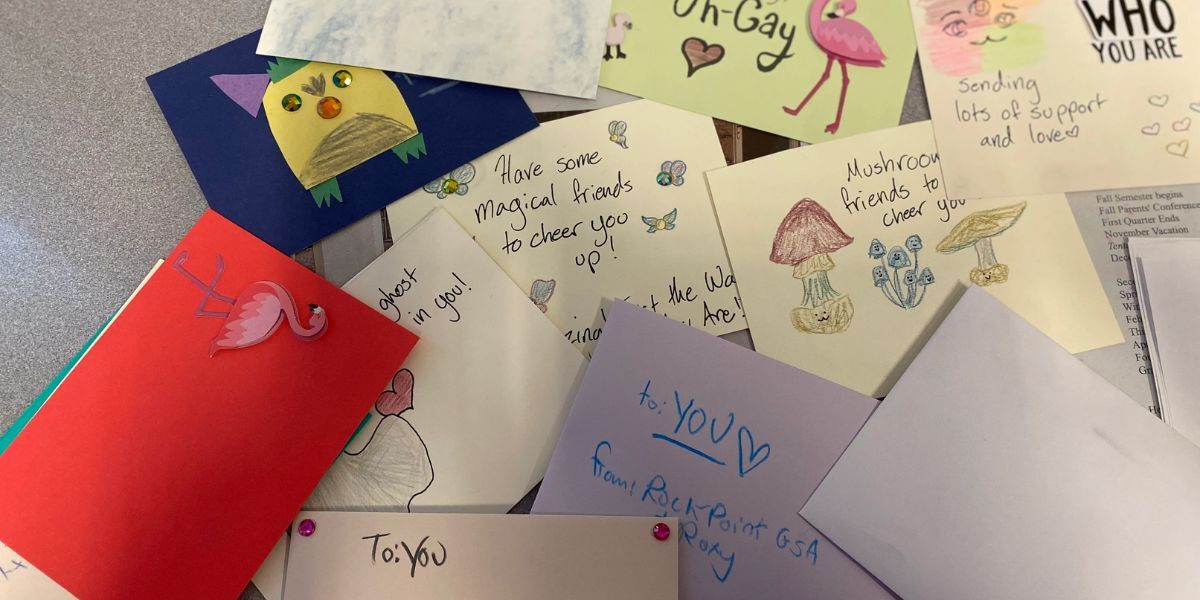
“May your choices reflect your hopes, not your fears.” - Nelson Mandela